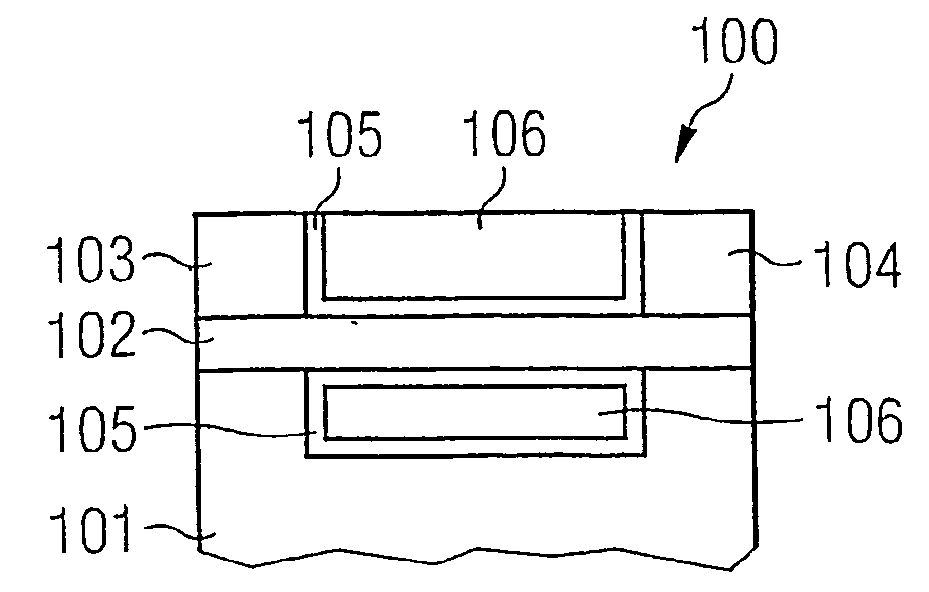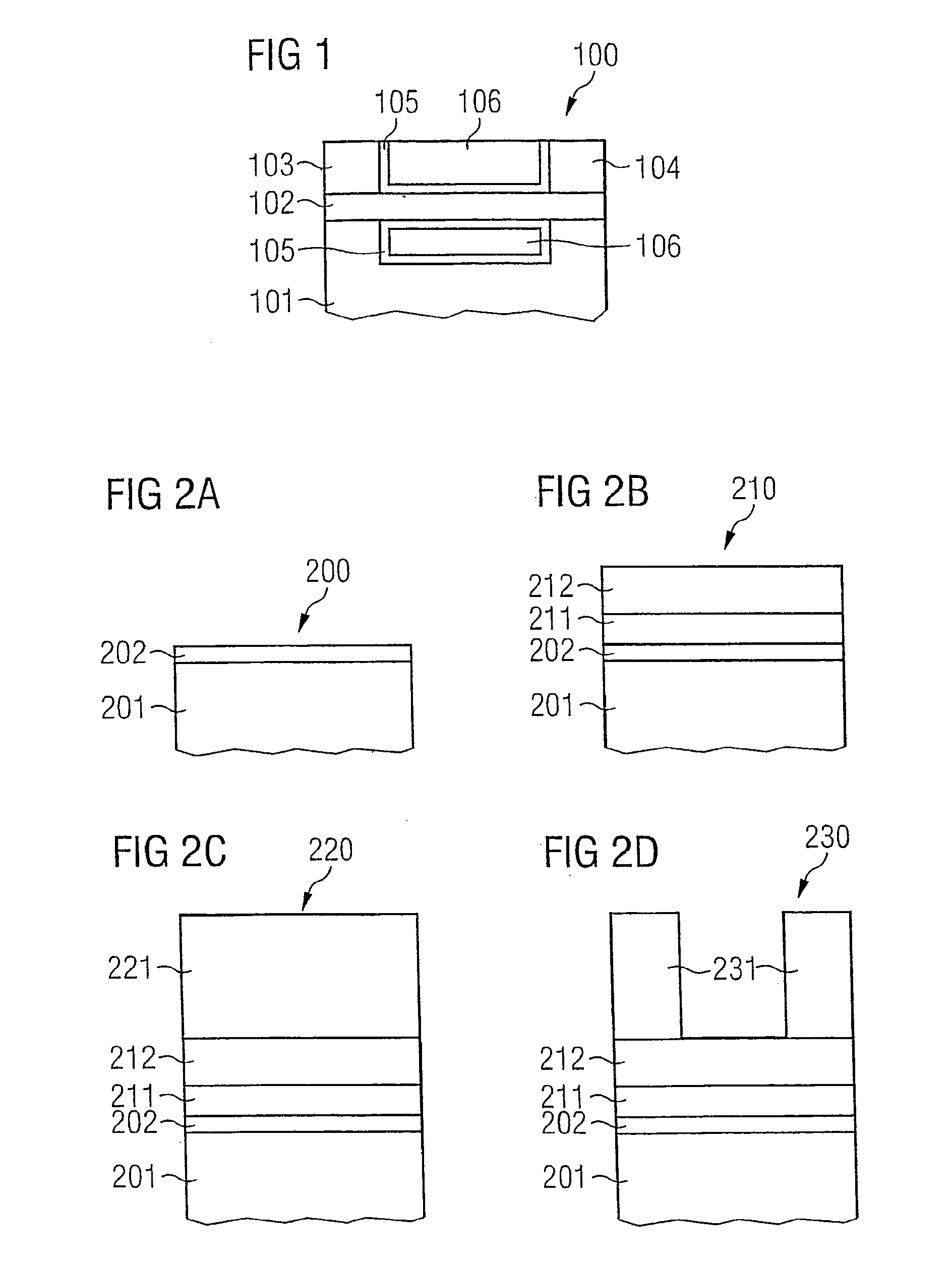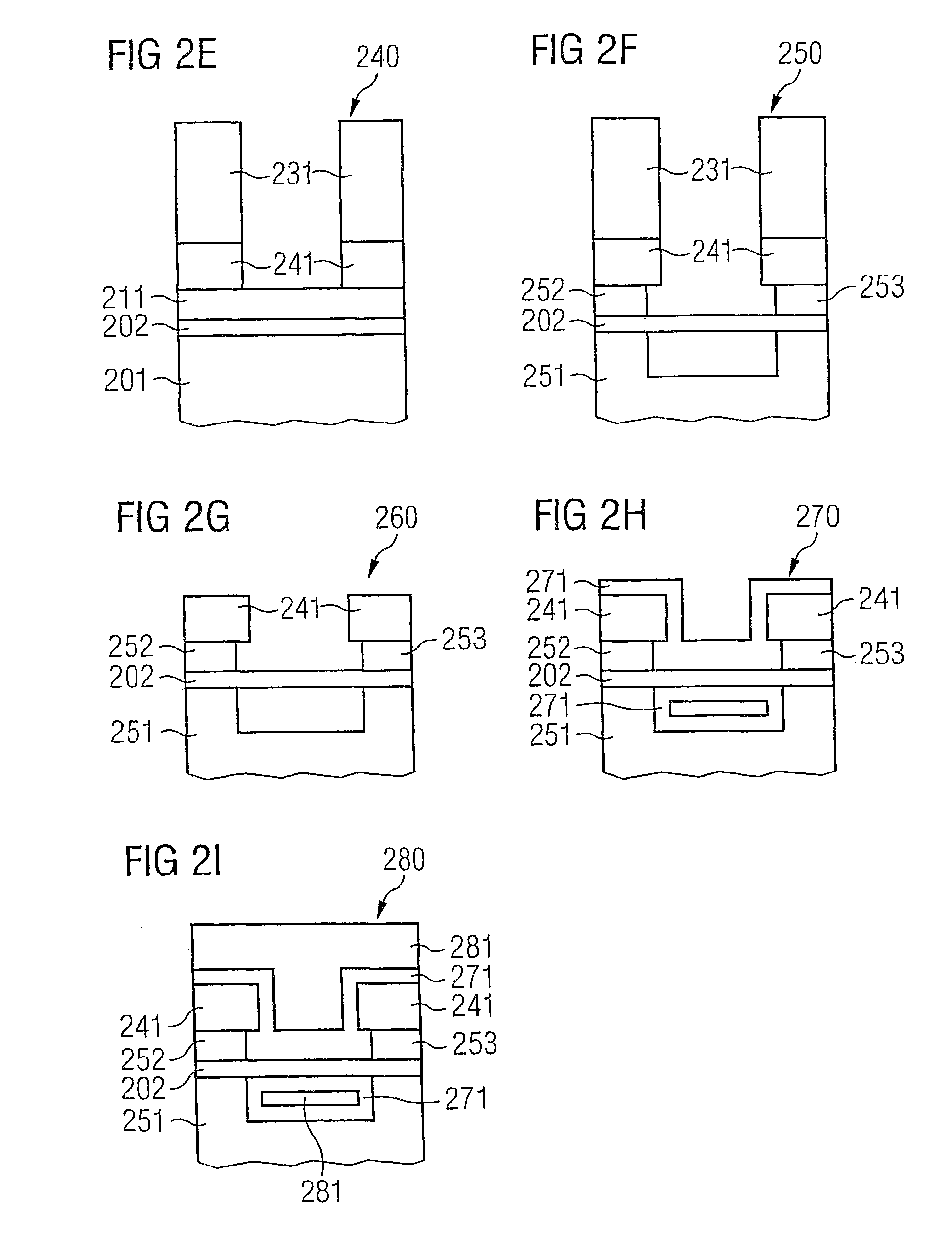Method for Fabricating a Nanoelement Field Effect Transistor with Surrounded Gate Structure
a technology of element field and transistor, which is applied in the manufacture of nanostructures, semiconductor devices, electrical devices, etc., can solve the problems of increasing the waste heat, developing ever smaller and densely arranged transistors, and subject to fundamental physical problems and restrictions, and achieves the effect of successfully controlling
- Summary
- Abstract
- Description
- Claims
- Application Information
AI Technical Summary
Benefits of technology
Problems solved by technology
Method used
Image
Examples
Embodiment Construction
[0074]The text that follows, referring to FIG. 1, provides a description of a carbon nanotube field effect transistor 100 in accordance with a preferred exemplary embodiment of the invention.
[0075]The carbon nanotube field effect transistor 100 has a silicon oxide substrate 101 and a carbon nanotube 102 formed on the silicon oxide substrate 101. A first end portion of the carbon nanotube 102 is formed with a first source / drain region 103 of metallic material, such as for example palladium, titanium, gold, cobalt, tantalum, tungsten or molybdenum, on the silicon oxide substrate 101. Furthermore, a second source / drain region 104 of metallic material, such as for example palladium, titanium, gold, cobalt, tantalum, tungsten or molybdenum, is formed on the silicon oxide substrate 101, which second source / drain region 104 is coupled to a second end portion of the carbon nanotube 102. A removed surface region of the silicon oxide substrate 101, which has been removed below a central porti...
PUM
 Login to View More
Login to View More Abstract
Description
Claims
Application Information
 Login to View More
Login to View More - R&D
- Intellectual Property
- Life Sciences
- Materials
- Tech Scout
- Unparalleled Data Quality
- Higher Quality Content
- 60% Fewer Hallucinations
Browse by: Latest US Patents, China's latest patents, Technical Efficacy Thesaurus, Application Domain, Technology Topic, Popular Technical Reports.
© 2025 PatSnap. All rights reserved.Legal|Privacy policy|Modern Slavery Act Transparency Statement|Sitemap|About US| Contact US: help@patsnap.com



